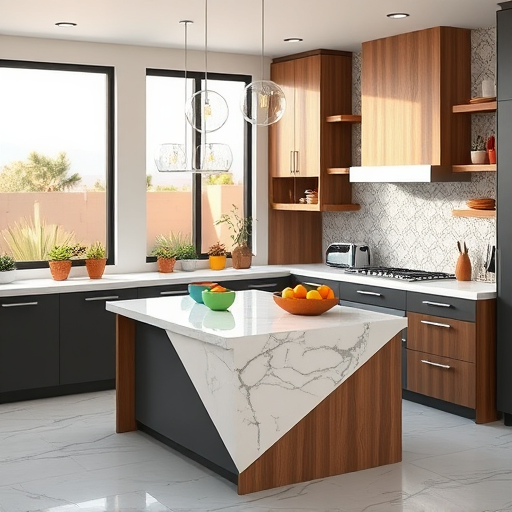
How to Deal with Kitchen Grease Stains: Effective Cleaning Tips
Understanding the Nature of Kitchen Grease Stains
Kitchen grease stains are a common yet persistent problem faced by homeowners and professional chefs alike. They originate from cooking processes involving oils, fats, and other fatty substances that, when splattered or spilled, adhere to various surfaces. Over time, these stains can become stubborn, affecting the aesthetic appeal of your kitchen and potentially leading to hygiene issues. Recognizing the composition and behavior of grease is essential for devising effective removal and prevention strategies.
What Makes Kitchen Grease Stains Particularly Challenging?
Unlike water-based stains, grease particles are hydrophobic—they repel water, making traditional cleaning methods ineffective. The greases tend to penetrate porous surfaces and form a film that attracts dust and dirt, exacerbating the staining and making it more difficult to clean. Furthermore, heat can often reinforce the adherence of grease, embedding it further into surfaces such as countertops, cabinets, and walls.
How to Deal with Kitchen Grease Stains: Effective Cleaning Strategies
What Are The Best Techniques for Removing Grease From Surfaces?
Effective removal begins with selecting appropriate cleaning agents and techniques tailored to the specific surface. Here are several proven methods:
- Degreasers and Commercial Cleaning Products: Specialized degreasers are formulated to break down the lipid molecules in grease. Ensure the product is suitable for your specific surface (e.g., countertops, cabinets). Follow the manufacturer's instructions for optimal results.
- Home Remedies Using Natural Ingredients: A mixture of dish soap, warm water, and white vinegar can be highly effective for mild to moderate stains. The dish soap emulsifies the grease, while vinegar provides a natural degreasing effect.
- Use of Baking Soda: Baking soda acts as a gentle abrasive and absorbs grease. Make a paste with water and apply it to the stain. Scrubbing gently with a soft cloth can lift the grease without damaging the surface.
- Hot Water and Steam Cleaning: For tough stains, steam cleaners or hot water with a fabric softener sheet can help loosen stubborn grease particles, especially on textured or porous surfaces.
How Can You Safely Remove Grease From Specific Kitchen Surfaces?
Different surfaces demand tailored cleaning approaches to prevent damage:
Quartz and Solid Surface Countertops
Use non-abrasive cleaners and soft cloths. Avoid harsh chemicals that can dull the surface. Regularly wiping down with a mild soap solution minimizes buildup. For more information on countertop selection, consider visiting our kitchen sink design.
Wood Cabinets and Surfaces
Use gentle, wood-safe cleaning solutions. Microfiber cloths help absorb grease without scratching. Phasing out aggressive scrubbing preserves the integrity of the wood finish.
Tile and Backsplash Areas
Apply an all-purpose degreasing spray, followed by scrubbing with a soft-bristled brush. Sealing tiles periodically prevents grease from penetrating porous grout lines.
What Are Practical Tips for Prevention of Kitchen Grease Stains?
How Can You Minimize Grease in Your Kitchen?
Prevention is always more effective than removal. Here are actionable tips that significantly reduce the accumulation of grease:
- Proper Ventilation: Installing high-quality range hoods with efficient extraction fans captures airborne grease before it settles on surfaces. Ensure your kitchen is well-ventilated during and after cooking.
- Regular Cleaning Habits: Wipe down kitchen surfaces daily with a mild cleaning solution. Regular maintenance prevents grease from hardening and becoming more difficult to remove.
- Use of Protective Barriers: Applying sealants or protective coatings on tiles, countertops, and cabinets can create a barrier against grease infiltration.
- Smart Kitchen Layout and Design: To ensure ease of cleaning, consider modern kitchen designs with less grout, smooth surfaces, and accessible cabinetry. For ideas on kitchen layout, visit our deep kitchen cabinets or explore other options.
Should You Consider Remodeling for Better Management of Grease?
Investing in a kitchen remodel with features designed for easy cleaning can significantly improve your maintenance routine. Durable, non-porous surfaces, strategic storage, and advanced ventilation systems are integral to a grease-resistant kitchen environment. For inspiration on modern kitchen upgrades, see our top-rated kitchen remodeling services.
Why Is Professional Assistance Sometimes Necessary for Stain Removal?
While many grease stains can be managed with DIY methods, stubborn and deeply ingrained stains may require professional intervention. Experts can employ advanced cleaning techniques, such as steam cleaning or chemical treatments, tailored to the specific surface and degree of staining. Additionally, professional services ensure that cleaning does not compromise the integrity of your kitchen surfaces.
Additional Tips to Maintain a Grease-Free Kitchen
- Schedule weekly deep cleaning sessions focusing on grease-prone areas.
- Replace or upgrade ventilation systems periodically to maintain optimal air quality and grease control.
- Opt for kitchen cabinetry that allows easy access for cleaning, such as modern open designs. Learn more about cabinet options at 10x10 kitchen cabinets.
- Implementing organization strategies that prevent clutter can also reduce grease accumulation by making surfaces easier to clean.
How to Deal with Kitchen Grease Stains: Summary of Key Takeaways
The primary steps involve identifying the nature of the stain, selecting the appropriate cleaning method, and adopting preventive measures. Regular maintenance, good ventilation, and thoughtful kitchen design play vital roles in managing grease and keeping your space hygienic and attractive. Remember, persistence and consistency are critical—effective stain removal and prevention are ongoing processes rather than one-time fixes.
Frequently Asked Questions (FAQs)
A mixture of dish soap, white vinegar, and baking soda offers a natural and effective approach to tackle most grease stains without harsh chemicals.
While bleach can remove certain stains, it is not recommended for grease removal as it does not break down fats effectively and may damage surfaces like wood or tile. Use specialized degreasers or natural remedies instead.
Ideally, wipe down all surfaces after each use and perform a more thorough cleaning weekly, especially in high-traffic and cooking areas.
Yes, gentle degreasers formulated for cabinetry are safest; always test on a small area first to prevent damage. For customized guidance, consider consulting professionals.
By upgrading to surfaces that are non-porous, easier to clean, and installing advanced ventilation, remodeling can drastically reduce grease accumulation and simplify maintenance routines.
Dealing with kitchen grease stains requires a combination of effective cleaning techniques and strategic prevention. For expert insights and tailored solutions, consider consulting professionals in kitchen design and renovation, such as Master Design Construction and Roofing - Rancho Cucamonga. Enhancing your kitchen’s cleanliness and functionality not only improves aesthetics but also promotes a healthier cooking environment.


























